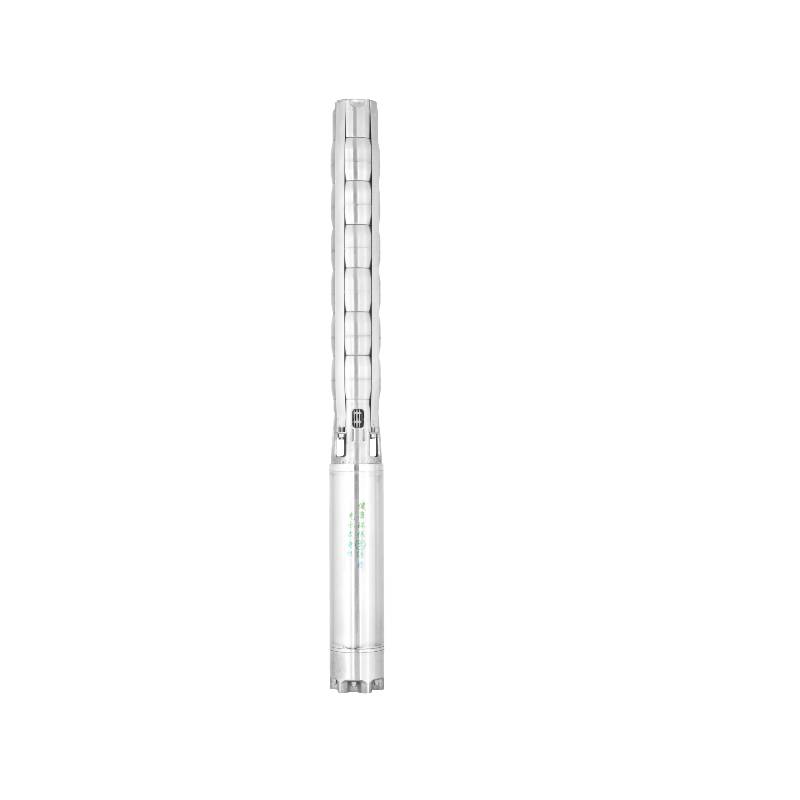Oct . 21, 2024 18:47 Back to list
Submersible Deep Well Pumps for Efficient Water Extraction Solutions
Understanding Deep Well Submersible Pumps
Deep well submersible pumps are vital components in various sectors, including agriculture, municipal water supply, and industrial applications. These pumps are designed to move water from deep underground aquifers to the surface, making them crucial for locations where groundwater is the primary source of water. In this article, we will explore the workings, advantages, and applications of deep well submersible pumps.
How Deep Well Submersible Pumps Work
A deep well submersible pump consists of a motor and a pump section connected by a shaft. The entire assembly is submerged underwater, typically in a well casing. The motor, usually hermetically sealed, operates with electricity to drive the impeller, which creates a pressure difference that pushes water up to the surface.
The design of these pumps allows them to handle higher pressures and deeper water levels than many surface pumps. They can typically operate at depths ranging from 25 to over 1,000 feet, depending on the specific model and installation conditions. The motor is cooled by the water surrounding it, ensuring that it functions effectively even in deep, high-pressure environments.
One of the key components of a submersible pump is the impeller, which is responsible for propelling water through the pump. Different types of impellers are designed for various applications, optimizing the pump's efficiency based on the water volume and depth of the well.
Advantages of Deep Well Submersible Pumps
Deep well submersible pumps offer several notable advantages
1. Efficiency These pumps are generally more efficient than surface pumps, especially when dealing with higher lift applications. Their ability to function submerged allows for less energy loss in the form of pressure drop.
2. Durability Submersible pumps are built to withstand harsh operating conditions, including high-pressure environments. They are constructed from corrosion-resistant materials, enhancing their lifespan when used with water that may contain minerals and other contaminants.
3. Reduced Noise Unlike surface pumps, which can be noisy due to their operation being above ground, submersible pumps function quietly underwater, making them ideal for residential areas.
deep well pump submersible

4. Lower Risk of Cavitation Due to their design, submersible pumps operate efficiently even at lower suction levels, reducing the risk of cavitation that can occur with surface pumps when they are unable to maintain proper water flow.
5. Space Efficiency Since these pumps are installed below the surface, they require less surface installation space, making them suitable for environments with limited space.
Applications of Deep Well Submersible Pumps
Deep well submersible pumps have a variety of applications across different sectors
1. Agriculture Farmers rely on these pumps for irrigation, accessing groundwater for crops. They provide consistent water supply, enhancing productivity and efficiency.
2. Municipal Water Supply Many municipalities utilize deep well submersible pumps to supply potable water to residents. They are critical in areas where surface water sources are inadequate or contaminated.
3. Industrial Use Industries often need reliable water sources for manufacturing processes. Submersible pumps can deliver large volumes of water for cooling, washing, and other industrial applications.
4. Geothermal Heating Some systems use deep well submersible pumps to circulate water through geothermal loops, providing energy-efficient heating and cooling options for buildings.
5. Aquarium and Pond Management These pumps are also used in aquaculture and pond maintenance, where maintaining water levels and quality is essential for aquatic life.
Conclusion
In summary, deep well submersible pumps are indispensable tools for accessing groundwater in various applications. Their unique design offers an efficient, durable, and quiet solution for lifting water from deep sources. As communities continue to seek sustainable water management solutions, the role of deep well submersible pumps will only become more significant, ensuring reliable access to this crucial resource. With advancements in technology, these pumps are likely to evolve further, enhancing their efficiency and capability in meeting global water demands.
-
Submersible Water Pump: The Efficient 'Power Pioneer' of the Underwater World
NewsJul.01,2025
-
Submersible Pond Pump: The Hidden Guardian of Water Landscape Ecology
NewsJul.01,2025
-
Stainless Well Pump: A Reliable and Durable Pumping Main Force
NewsJul.01,2025
-
Stainless Steel Submersible Pump: An Efficient and Versatile Tool for Underwater Operations
NewsJul.01,2025
-
Deep Well Submersible Pump: An Efficient 'Sucker' of Groundwater Sources
NewsJul.01,2025
-
Deep Water Well Pump: An Efficient 'Sucker' of Groundwater Sources
NewsJul.01,2025
-
 Submersible Water Pump: The Efficient 'Power Pioneer' of the Underwater WorldIn the field of hydraulic equipment, the Submersible Water Pump has become the core equipment for underwater operations and water resource transportation due to its unique design and excellent performance.Detail
Submersible Water Pump: The Efficient 'Power Pioneer' of the Underwater WorldIn the field of hydraulic equipment, the Submersible Water Pump has become the core equipment for underwater operations and water resource transportation due to its unique design and excellent performance.Detail -
 Submersible Pond Pump: The Hidden Guardian of Water Landscape EcologyIn courtyard landscapes, ecological ponds, and even small-scale water conservancy projects, there is a silent yet indispensable equipment - the Submersible Pond Pump.Detail
Submersible Pond Pump: The Hidden Guardian of Water Landscape EcologyIn courtyard landscapes, ecological ponds, and even small-scale water conservancy projects, there is a silent yet indispensable equipment - the Submersible Pond Pump.Detail -
 Stainless Well Pump: A Reliable and Durable Pumping Main ForceIn the field of water resource transportation, Stainless Well Pump has become the core equipment for various pumping scenarios with its excellent performance and reliable quality.Detail
Stainless Well Pump: A Reliable and Durable Pumping Main ForceIn the field of water resource transportation, Stainless Well Pump has become the core equipment for various pumping scenarios with its excellent performance and reliable quality.Detail
